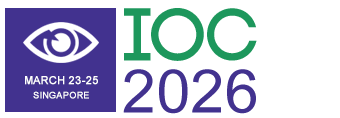Title : Storytelling to cure blindness: A digital implementation lab to expand global ophthalmology training awareness and philanthropy
Abstract:
Background: Preventable blindness remains one of the most solvable global health inequities, yet public awareness, trainee engagement, and philanthropic participation remain disproportionately low. At the same time, digital creators have demonstrated an unprecedented ability to mobilize global attention for humanitarian work. Notably, large-scale digital storytelling models—such as those pioneered by creators like Mr. Beast, whose philanthropic videos reach hundreds of millions of viewers and directly translate into measurable health and social-impact outcomes—have reshaped the landscape of public engagement. These models demonstrate that ethically crafted, emotionally resonant short-form content can influence behavior, expand donor bases, and elevate global health issues at a scale previously impossible. Building on this framework, we created the “Storytelling to Cure Blindness” digital implementation lab to test whether structured, ethical storytelling can accelerate global ophthalmology engagement, increase awareness, and strengthen training and philanthropic pathways.
Methods: A 12-person multinational team spanning Stanford University, Nepal, Thailand, Honduras, Guatemala, Mexico, and Ethiopia produces documentary-style short-form content highlighting cataract outreach, uveitis care, surgical training, and patient stories. Content is disseminated through Instagram with cross-posting to TikTok and YouTube Shorts. Engagement analytics are monitored weekly. Ethical storytelling protocols guide every post. RCT-style audience testing is being developed with industry analytics groups to compare narrative approaches and determine which storytelling formats most effectively generate trainee inquiries, collaboration requests, and donor activity.
Results: Since launch, the initiative has demonstrated 100% week-over-week follower growth, with 22,419 cumulative views across posts. Early collaborations include the American Academy of Ophthalmology (Figure 5), Cure Blindness, and the Byers Eye Institute at Stanford (Figure 3), with confirmed resharing and institutional amplification. Additional results include rapid international media engagement (Figure 6), U.S. regional coverage (Figure 4), and audience reach generated through educational anatomy content (Figure 1). Active partnership development with Fred Hollows Foundation, Helen Keller International, and National Geographic is underway. Early downstream outcomes include trainee recruitment inquiries, NGO collaboration requests, and donor engagement directly linked to content.
Conclusions: Digital storytelling, when paired with implementation science and ethical narrative frameworks, functions as a scalable public health intervention. The rapid growth, strong engagement metrics, and major institutional partnerships demonstrate the potential of structured storytelling to expand training pipelines, increase global ophthalmology awareness, and strengthen philanthropic support. This model provides a replicable and scalable framework for other global health domains.




